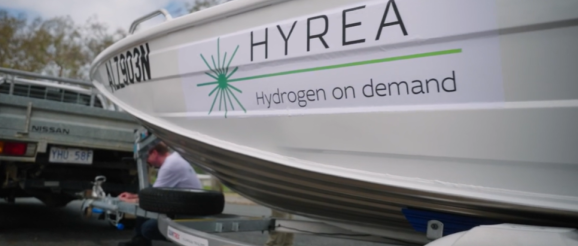$17 million kitty to boost energy innovation and ideas in the Territory | Riotact

Keeping the ACT moving forward in the renewable energy space will be boosted by a $17 million kitty aimed at funding local projects and ideas. Industry contributions have made the 2024 Energy Innovation Fund possible, as part of efforts to support Canberra’s transition to net-zero emissions by 2045. Formerly known as the Renewable Energy Innovation Fund (REIF), which has supported more than 20 ACT-based energy projects since it started in 2016, the name has been revamped to ensure all innovation in the energy sphere is being recognised. Three different grants are available. Fund chair Professor Ken Baldwin said the Technology Demonstration Grant, worth up to $10 million over five years, was designed to support a broad range of new and emerging technologies focussed on energy transition. “This [name change] is to ensure we encompass all forms of energy that feed into the energy transition, including renewables, but also including other forms of technology that will make the renewables hit the ground running,” he said. These grants target businesses and are open year-round, with applications assessed once a quarter. Up to $3.75 million over five years is available through the new Policy Challenge Grant open to businesses, research institutions and think tanks to develop policies that relate to the deployment of renewables, batteries, EVs, and other support systems that will develop the energy system during transition outside of the electricity sector. The Innovation Ecosystem Grant – up to $3.25 million over five years – will go to projects that facilitate ecosystems, and business acceleration, collaboration and investment opportunities. “Indeed, to create export opportunities for companies that wish to manufacture in the energy transition, and export that beyond the borders of the ACT,” Prof Baldwin said. Canberra-based companies have already benefitted from the grants. PV Lab Australia is the only commercial solar panel testing laboratory in the country. Partner and director Lawrie McIntosh said the money had helped the business become an accredited lab. “For solar panels, that means we’re going to be one of only a dozen or so [labs] worldwide with that kind of formal accreditation in what we do,” he said. “We’re really proud of that too because, as the only one in Australia doing this, it sets the ACT apart yet again for its activeness in the Australian marketplace.” HYREA (Hydrogen Renewable Energy Australia) has been working on producing hydrogen energy-on-demand via mobile platforms such as ships or trucks. Director Ilya Shadrivov said his team was grateful to have the opportunity to develop its technology further. “[The grant] came at absolutely the right time because we were doing the lab-scale demonstrations, and a lot of industry partners and investors can be a bit sceptical when they see things only in the lab,” he said. “With this [money] we’re going to launch a small boat … powered by the hydrogen which is produced on that small boat … on Canberra lakes.” The ACT’s transition to net-zero emissions by 2045 is no secret, but these grants are about investing in long-term solutions to benefit everyone. Water, Energy and Emissions Reduction Minister Shane Rattenbury said it was about “leveraging innovation” and keeping the ACT at the “forefront as a leader” in renewable energy and technology. “We’ve got the policy settings in place for our own action but what we want to make sure is that what we’re doing in the ACT is being amplified, is creating economic opportunity in the ACT, and make sure the ideas we’re putting together here and the technologies being put in place are being shared with the rest of the world,” he said. “The ACT has developed a national and international reputation as an energy transition innovation hub, with world-leading capabilities. This new funding ensures the Territory continues to a place of opportunity for energy transition research, innovation and investment.” More information on the Energy Innovation Fund, including details on eligibility and how to apply, is available online.
